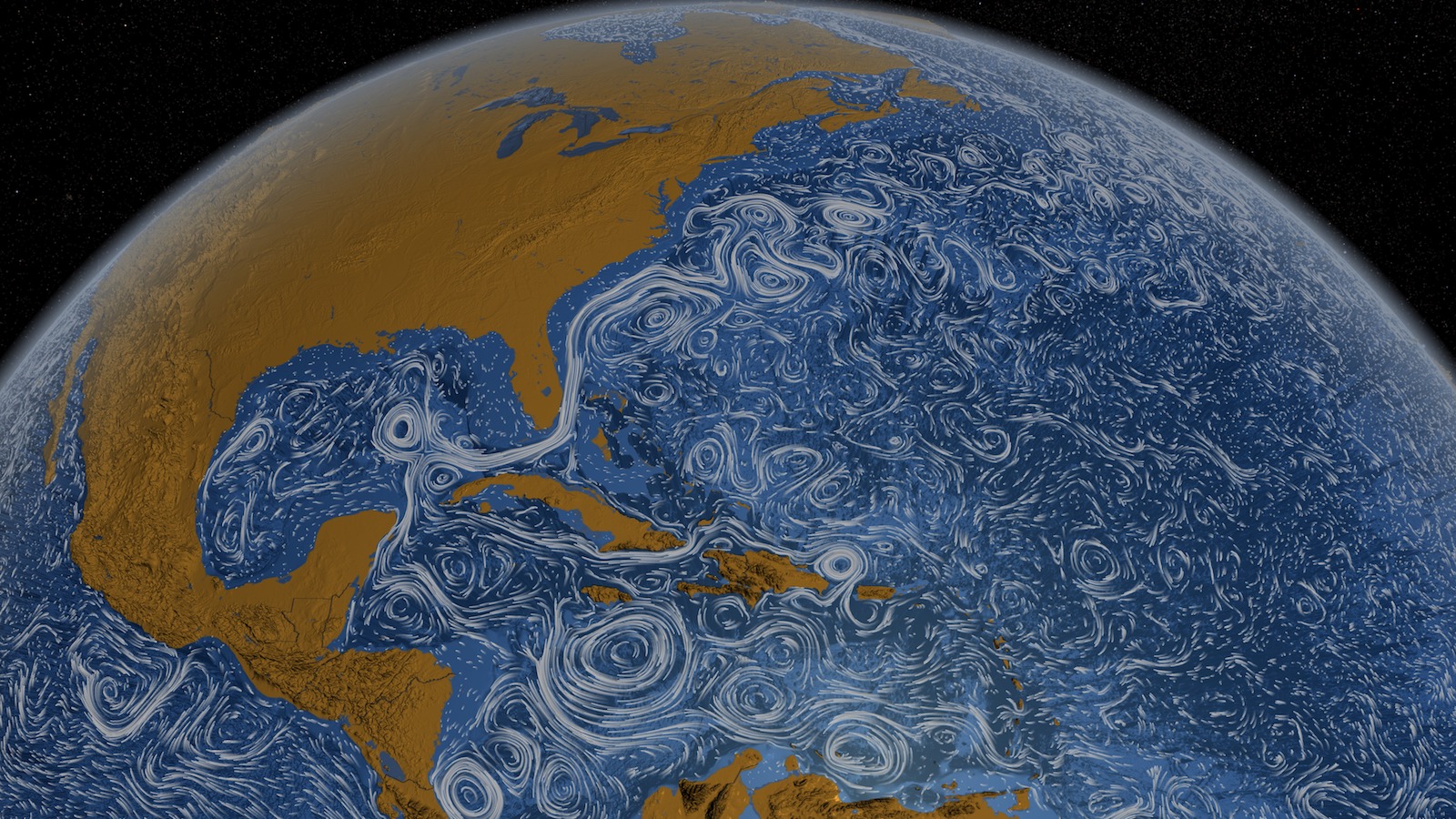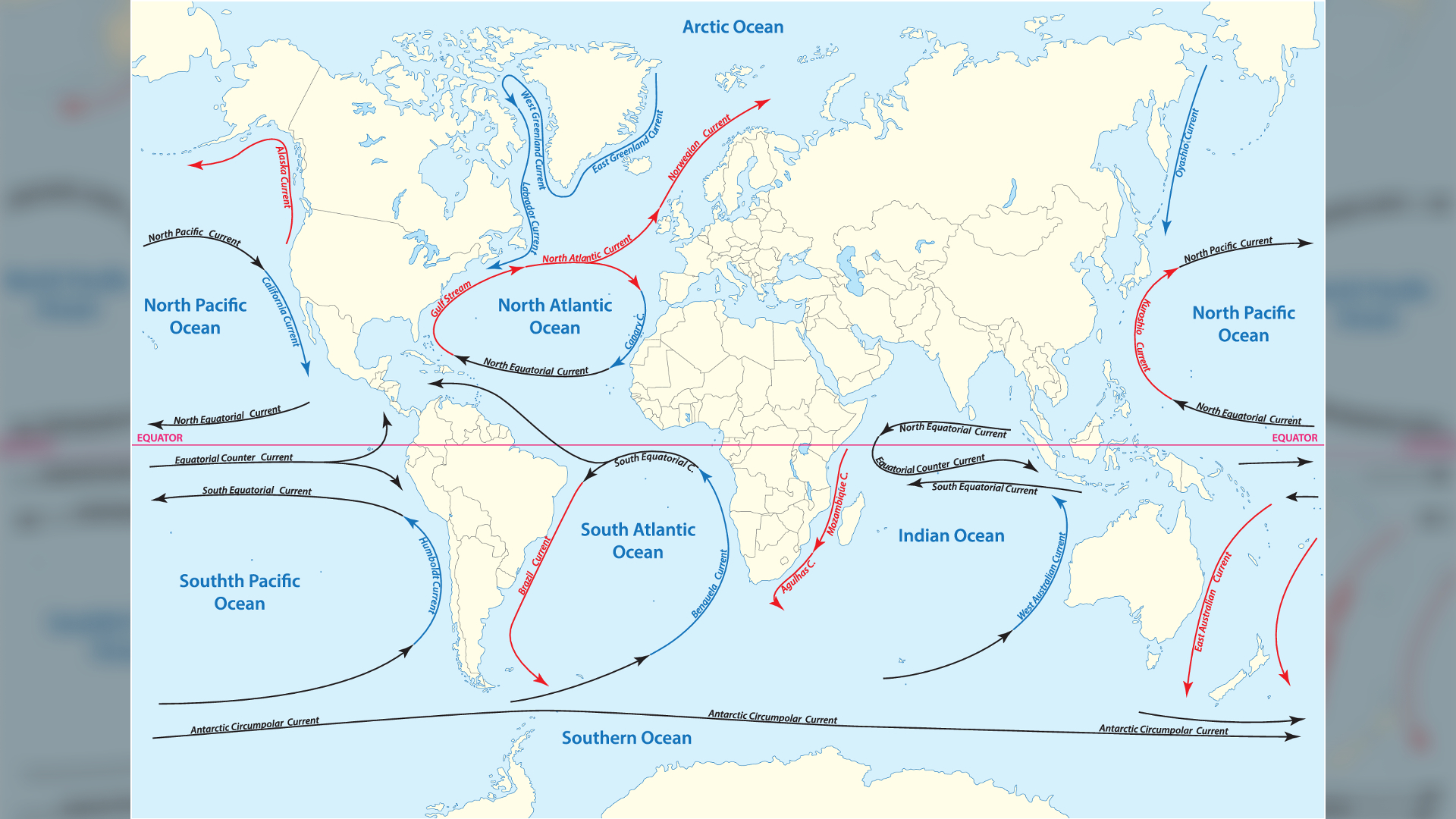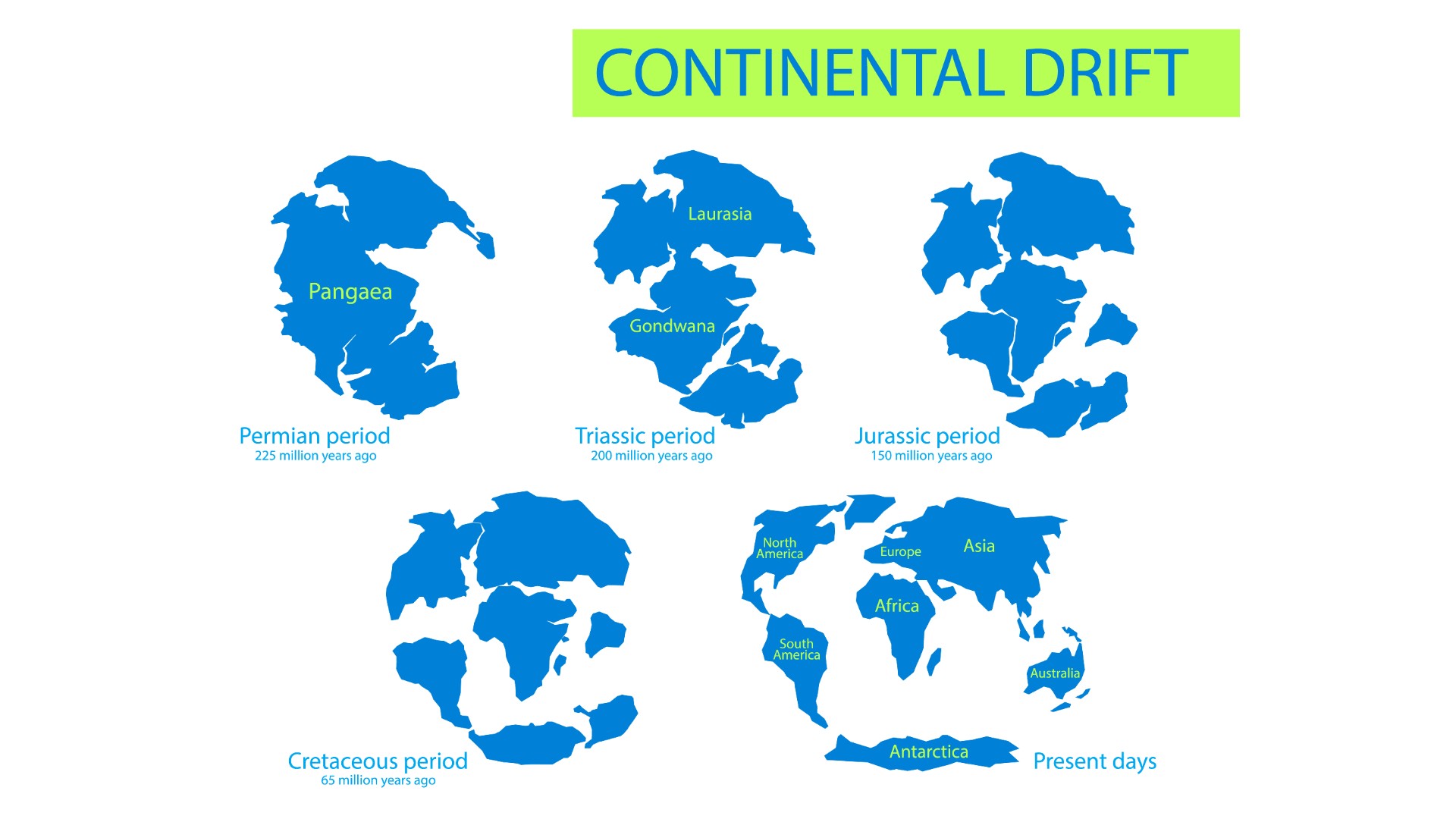
Where did ocean currents come from?
The same forces that form ocean currents today shaped the first currents eons ago.

Flows of water in Earth's seas have guided navigators for centuries and shaped climates for much longer. But how did ocean currents first emerge?
These flows would have appeared with the planet's first oceans, around 4 billion to 4.5 billion years ago, spurred by the same forces that propel them today: winds, tides, global differences in temperature and saltiness, and the planet's rotation.
Ocean currents behave much like rivers within the larger bodies of water, according to the University of Hawaiʻi at Mānoa. They range in size from small currents near beaches to ocean-spanning flows, like the enormous gyres, or elliptical cycles, that snake between continents. For example, in the North Atlantic Gyre, water flows west along the equator, north past the U.S. East Coast in the Gulf Stream, back east along the Arctic, then south past Europe and Africa as the Canary Current.

Winds, powered by solar energy, direct surface currents, like those in gyres. Differences in temperature and saltiness between the equator and Earth's poles power deep-water currents known as thermohaline (for "heat" plus "salt") circulation. It can take a thousand years to complete a global thermohaline cycle, James Potemra, a professor at the University of Hawaiʻi at Mānoa Institute of Geophysics and Planetology, told Live Science. Tides create smaller currents, while Earth's spin pushes gyres clockwise in the Northern Hemisphere and counterclockwise in the Southern Hemisphere (the so-called Coriolis effect).
As soon as the planet's first oceans appeared, they would have experienced similar forces, Roger Fu, a professor in the Department of Earth and Planetary Sciences at Harvard University, told Live Science. So, dating the emergence of currents comes down to timing the birth of oceans. "Earth had the same sorts of temperature gradients back in the early days as now, because the equator is hotter," Fu said. "So, it would have had currents."
Conservative estimates put the ocean's age at 3.8 billion years, Fu said. However, ancient zircon crystals in Australia bear evidence of ocean water 4.4 billion years ago, or about 100 million years after Earth formed. "So very early in Earth's history, we would have had oceans," Fu said.
Same forces, different shapes

Primeval current patterns would have been very different, however. The continents have shifted position drastically, likely all joined together in supercontinents at various times, with other configurations in between. That would have changed the paths surface currents took, with no pocket between the Old and New worlds to forge the North Atlantic Gyre, for example.
Sign up for the Live Science daily newsletter now
Get the world’s most fascinating discoveries delivered straight to your inbox.
On billion-year timescales, "the ocean currents are going to be completely unrecognizable, because the continents were unrecognizable," Fu said. Different continental positions would have altered deeper ocean currents, too, Potemra said, with thermohaline currents enjoying largely unblocked paths from the equator to the poles, for example.
Because of the time it takes for continents to appreciably change configuration, though, currents seem eternal on human timescales. Today's major currents "probably came into existence … millions of years ago because of some continent rearrangement," Fu said.
Historical records, in fact, show the long persistence of today's currents. "It was Benjamin Franklin that first discovered the Gulf Stream, because he noticed when the ships came over that this current … would take them north very quickly," Potemra said. "And the Vikings would have experienced the Gulf Stream."

Michael Dhar is a science editor and writer based in Chicago. He has an MS in bioinformatics from NYU Tandon School of Engineering, an MA in English literature from Columbia University and a BA in English from the University of Iowa. He has written about health and science for Live Science, Scientific American, Space.com, The Fix, Earth.com and others and has edited for the American Medical Association and other organizations.










